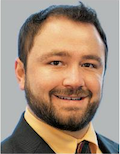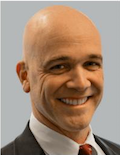Article
How to form a student loan repayment strategy
Author(s):
Forming a student loan repayment strategy is not a one-size-fits-all process. What works well for a friend or colleague may not be an effective strategy for you.


What is the most beneficial way to repay my medical school student loan debt?
Statistics show that today’s physicians leave their programs having accumulated an average debt of just under $200,000, plus an additional $25,000 in undergraduate student loan debt they carried over from previous programs (bit.ly/Educationdebt). Finding a strategy for repaying this debt in the most efficient manner is critically important to many physicians’ long-term financial success.
Physicians often have questions about their student loan repayment options: Is moving to an income-based plan best for me? Should I work for a non-profit and go for Public Service Loan Forgiveness? Should I refinance my loans? These are the questions we hear most often.
Most physicians are looking for the route most traveled. They want to know what their peers are doing and follow in their footsteps. However, forming a student loan repayment strategy is not a one-size-fits-all process. What works well for a friend or colleague may not be an effective strategy for you.
Your age, marital status, age of children, employer, practicing area of specialty, earning potential, and other financial goals are all factors (just to name a few). Additionally, the repayment options continue to change and morph as changes occur in public policy, refinancing options, and interest rates, and public outcry for relief builds. The student loan landscape continues to change, and navigating it can be a challenging task.
Read: How to choose between Roth, traditional accounts
When evaluating different repayment strategies, here are some things to consider:
Will you be practicing at a for-profit or non-profit organization? Public Service Loan Forgiveness is a hot-button issue, but as long as it remains a viable option, it is one worth considering for physicians with substantial student loan debt. Many physicians complete their residency and fellowship at non-profit hospitals. If they were paying their loans during that time, they may already be 5-7 years into the 10-year loan forgiveness process.
Are there loan repayment assistance programs available to you? The National Institutes of Health repays up to $35,000 per year of student loans if you agree to conduct medical research in needed fields. The National Health Service Corps offers tax-free loan repayment assistance of up to $50,000 for a 2-year commitment to qualified health care providers who choose to take their skills to geographic areas with inadequate medical care. Additionally, most individual states have loan repayment assistance programs for physicians who practice in their state facilities.
Is refinancing a viable option? If you practice medicine at a for-profit company, which many private practices are, refinancing is worth exploring. Refinancing can dramatically reduce your interest rates and monthly payments. The lower interest rate may result in paying less over the lifetime of the loan. However, rates are often determined by a combination of credit score and income. Refinancing may also free up enough monthly funds that can be used to save other important financial goals.
Everyone’s situation is unique, and many factors influence which repayment strategy is best. Consult your financial professional to determine which student loan repayment strategy fits your needs best.
Next: Should I focus on paying down my debt before I start saving for retirement?
Should I focus on paying down my debt before I start saving for retirement?
We always encourage physicians to try and save for retirement as early as possible. However, for some, the burden of credit card, student loan, and mortgage debt can be quite stressful. When examining your situation, is your debt keeping you up at night? If so, your mental health should always be a priority and focusing on paying down the debt (at least to a more comfortable level) should be the priority.
Also see - [Video] Prescription for financial health: Tips for early-stage physicians
If you are “comfortable” with your debt and just want to prioritize your cash flows, there is a general rule of thumb you can follow. If you think you can achieve a long-term rate of return on your investments that is higher than the interest rate on your debt, it is best to invest the funds. This is often the case with low-interest debt such as mortgages, car payments, and refinanced student loans.
However, if the interest rate on the debt is higher than the rate of return you believe you can achieve with your investments, it is better to pay off the debt first. This is often the case with credit cards and non-refinanced student loans. But again, everyone’s situation is unique, and many factors influence which strategy is best.
More from Urology Times:
How to choose the best retirement savings plan
Do I really need a long-term disability policy?
How to create a more balanced portfolio
Send your questions about estate planning, retirement, and investing to Jeff Witz, CFP, and David Zemon c/o Urology Times, at UT@advanstar.com Questions of general interest will be chosen for publication. The information in this column is designed to be authoritative. The publisher is not engaged in rendering legal, investment, or tax advice.
Subscribe to Urology Times to get monthly news from the leading news source for urologists.

















